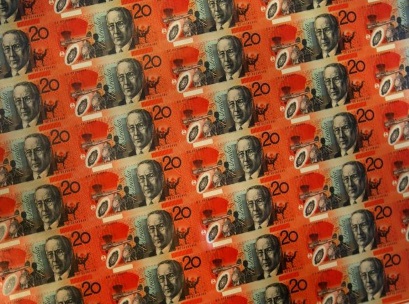
The Australian dollar has risen Monday, buying 67.93 US cents from 67.76 US cents on Friday.
One Australian dollar buys 73.50 Japanese yen, from 72.29; 61.50 euro cents, from 61.29; 53.82 British pence, from 55.10 and 107.21 NZ cents, from 106.91.
The local currency was trading in a tight range last week, as market sentiment turned cautious on renewed worries about souring US-China relations and the impact on the world economy.
The Aussie dollar rose on mid-morning Wednesday, to be 67.36 US cents in early afternoon trade after finishing at 67.51 US cents on Tuesday.
The Aussie faces near-term chart resistance at 67.80 US cents, a breach above that could take it to 68.00 US cents – a level it has failed to sustain since late September.
The small gains in Australian currency were led by a weakening US dollar, as risk sentiment fell after the US State Department imposed visa restrictions on Chinese government and Communist Party officials it believes responsible for the detention or abuse of Muslim minorities in Xinjiang province.
Separately, the US Commerce Department blacklisted Chinese companies over Beijing’s treatment of predominantly Muslim ethnic minorities, and President Donald Trump said a quick trade deal was unlikely.
The latest developments come at a critical juncture in the 15-month trade war between Washington and Beijing, which has roiled market sentiment, hit manufacturing activity and business confidence around the world.
Top-level talks are scheduled to resume on Thursday and Friday, when Chinese Vice Premier Liu He meets with US Trade Representative Robert Lighthizer and Treasury Secretary Steven Mnuchin in Washington.
News from Australia was gloomy too, with a closely-watched measure of consumer sentiment hitting a four-year low in October despite three rate cuts this year and early signs of revival in the country’s property market.
The Reserve Bank of Australia cut interest rates to a record low 0.75 per cent last week in a bid to revive employment, consumer spending and inflation.
“This result will be of some concern to the monetary authorities,” Westpac chief economist Bill Evans wrote in a note.
“Consumers are looking behind the reason for the rate cut and, arguably, the absolute level of rates and getting nervous.”
Growth in Australia’s A$1.95 trillion economy slowed to decade lows in the June quarter, while initial data for the third quarter indicates the slowdown has extended.
Australian government bond futures rose, with the three-year bond contract and the 10-year contract up one tick each at 99.435 and 99.129 respectively.





